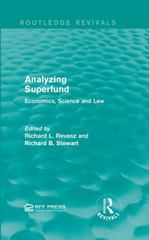Question
Australia's coronavirus spending Professor Junankar has criticised the Australian Government's economic stimulus package to combat the Coronavirus-induced economic fallout and raises three main concerns about
Australia's coronavirus spending Professor Junankar has criticised the Australian Government's economic stimulus package to combat the Coronavirus-induced economic fallout and raises three main concerns about the fiscal spending. The first is the delays: many payments are still a month off. .... Why are we waiting? This should have happened a month ago, before lots of businesses closed down and lots of people lost their jobs." The second problem is the decision to target businesses rather than individuals. He says the worst-affected industries rely heavily on casual labour, especially young people and women, who will not receive some of the aid targeting workers. His third concern is the lack of a "grand investment" to improve the national economy. Professor Junankar cites the Rudd government's decision to build school infrastructure and improve home insulation, which had lasting benefits. - ABC, April 2020 Professor Richard Holden, Professor Warwick McKibbin and Professor John Quiggin have questioned the relevance of RBA's focus on inflation-targeting during an economic crisis. "As part of a co-ordinated macroeconomic response, the Reserve Bank of Australia cut rates to effectively zero and embarked upon a bond-buying program to keep three-year bond rates at 25 basis points. This is a good start. But, as with fiscal policy, the entire monetary policy framework needs rethinking. This was clear before COVID-19 tested the existing macroeconomic frameworks. It is even clearer now." - ANU, May 2020 Australia is in recession for the first time in 29 years Australia is in its first recession in 29 years, with gross domestic product in the June quarter down seven per cent, the largest contraction on record. The negative growth follows a 0.3 per cent drop in the March quarter, with the most recent figures taking into account the full impact of the first wave of coronavirus shutdowns on the economy. - SBS, September 2020
From the above concerns raised and that Australia is now officially in a recession, you have been tasked by the House of Representatives Economics Committee to undertake the following:
1) Using data drawn from the Australian Bureau of Statistics (ABS), present diagrams showing Australia's economic growth from September 2019 to December 2020. Describe the trend and examine some reasons behind the cyclical movements and their impact on each of the expenditure components of GDP. You are expected to use quarterly figures.
2) Discuss and critically analyse the effectiveness of fiscal and monetary policies employed to fight against the economic slow-down in the March quarter of 2020, June quarter of 2020 and September quarter of 2020; and how they influenced Australia's economic growth. Note: You do not need to cover all policies. Just select those that are appropriate.
Some key elements: You do not have to relate Question 1 to the background, although you are free to do so. For fiscal policy, discuss the effectiveness of the stimulus package targeting Australia's COVID-19 induced economic fallout and how these policies relate to economic growth. For monetary policy, discuss the effectiveness of the monetary policy and how changes in the cash rate could impact Australia's economic growth. It is essential to illustrate your analysis with aggregate demand-aggregate supply models (AD-AS models). Other appropriate models may be used but not essential.
Step by Step Solution
There are 3 Steps involved in it
Step: 1

Get Instant Access to Expert-Tailored Solutions
See step-by-step solutions with expert insights and AI powered tools for academic success
Step: 2

Step: 3

Ace Your Homework with AI
Get the answers you need in no time with our AI-driven, step-by-step assistance
Get Started


